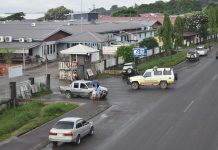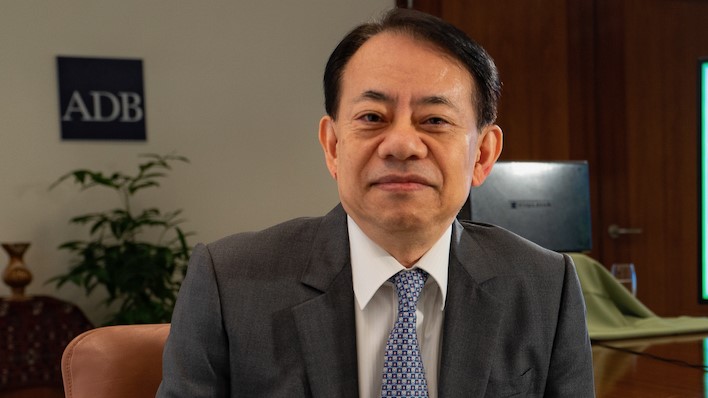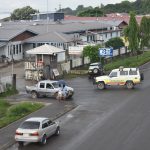By Masatsugu Asakawa, President of the Asian Development Bank
The world is at a tipping point. The pandemic left a toxic legacy of spiraling poverty, debt distress, and inequality, all amid a worsening cost-of-living crisis. Even more alarming is climate change, a long-term existential threat that is already wrecking lives and costing billions.
Recent climate-related disasters are a tragic foretaste of the world that awaits if we don’t act now to prevent these immense and overlapping threats, or polycrises, from defining our future.
Multilateral development banks (MDBs) like the Asian Development Bank (ADB), of which I am president, must do more and act faster to overcome these crises and help people—while there is still time. Business as usual isn’t an option, especially in Asia and the Pacific where nearly 70 million people have fallen back into extreme poverty since the pandemic, and which accounts for more than half of the world’s greenhouse-gas emissions.
We need bold action to deliver the estimated $3 trillion needed annually by 2030, according to the G20, to tackle global challenges and revive progress on the Sustainable Development Goals (SDGs).
The G20 believes MDBs can help deliver this finance by wringing every last dollar from their balance sheets. I agree, and at ADB that process is well underway. In September, we announced capital management reforms that include optimising our prudential level of capitalisation.
These reforms unlock US$100 billion in new commitments capacity over the next 10 years. They expand the bank’s annual new commitments capacity to more than US$36 billion—an increase of approximately US$10 billion, or about 40 percent. This will make up to US$360 billion available over the next decade to expand our climate investments, spur momentum on the SDGs, and increase our support for economies still suffering from pandemic impacts. Importantly, the reforms are designed to ensure ADB’s AAA credit rating is safeguarded.
This is part of a series of innovations ADB has made to expand its lending capacity. In May, ADB announced the Innovative Finance Facility for Climate in Asia and the Pacific, which allows donors to guarantee parts of the existing sovereign loan portfolio on ADB’s balance sheet, allowing ADB to leverage and generate US$5 in climate finance for every $1 of guarantees. ADB has also entered sovereign exposure exchange agreements with other MDBs to reduce portfolio concentration risks.
And it won’t be our last step. I see this as another advance on a continuous path of reform that all MDBs must take to respond effectively to rapidly evolving challenges like global warming.
To meet these challenges head on, MDBs need to take urgent actions across three fronts.
First, it is vital that MDBs expand their capacity to mobilise private investment for climate and sustainable development programmes. MDBs are uniquely placed to catalyse the move from billions of dollars in development finance to the trillions needed, by leveraging their balance sheets to generate private investment at all stages of the project cycle.
This includes promoting policy development upstream to create an enabling environment for private investment, creating bankable projects midstream through advisory support, and financing projects downstream to crowd in private capital.
Second, as many countries can’t afford to take on debt after spending to manage pandemic impacts, they need to raise more funds domestically. The G20 estimates that two-thirds of the required US$3 trillion for global challenges can be raised through domestic revenue mobilisation and local finance.
Economies must mobilize more tax revenue, modernise tax authorities through digitalisation, and cooperate to ensure a fair and well-functioning international tax system. Environmental taxes are one way to increase domestic revenue and contribute to low carbon development, while a more efficient value-added tax (VAT), including VAT on the digital economy, could be a key source of income for developing countries. Countries should also revisit policies on fossil fuel subsidies.
Finally, financial innovation must continue. ADB is working to deepen the region’s domestic capital markets. Stepping up the use of blended finance will crowd in private investment. De-risking instruments such as credit enhancement products through guarantee schemes and insurance can unlock capital for climate action, as can instruments such as thematic and sustainable bonds.
We can further promote climate action by engaging with evolving carbon markets. ADB’s Climate Action Catalyst Fund provides relevant mitigation projects with upfront carbon finance through the purchase of carbon credits under Article 6 of the Paris Agreement. This complements our ongoing work to help our members develop the policies and skills needed to participate in carbon trading.
Crises can escalate quickly. We must move even faster to reduce the pain they cause and help secure a bright future for our region and beyond.
SOURCE: ADB/PACNEWS















